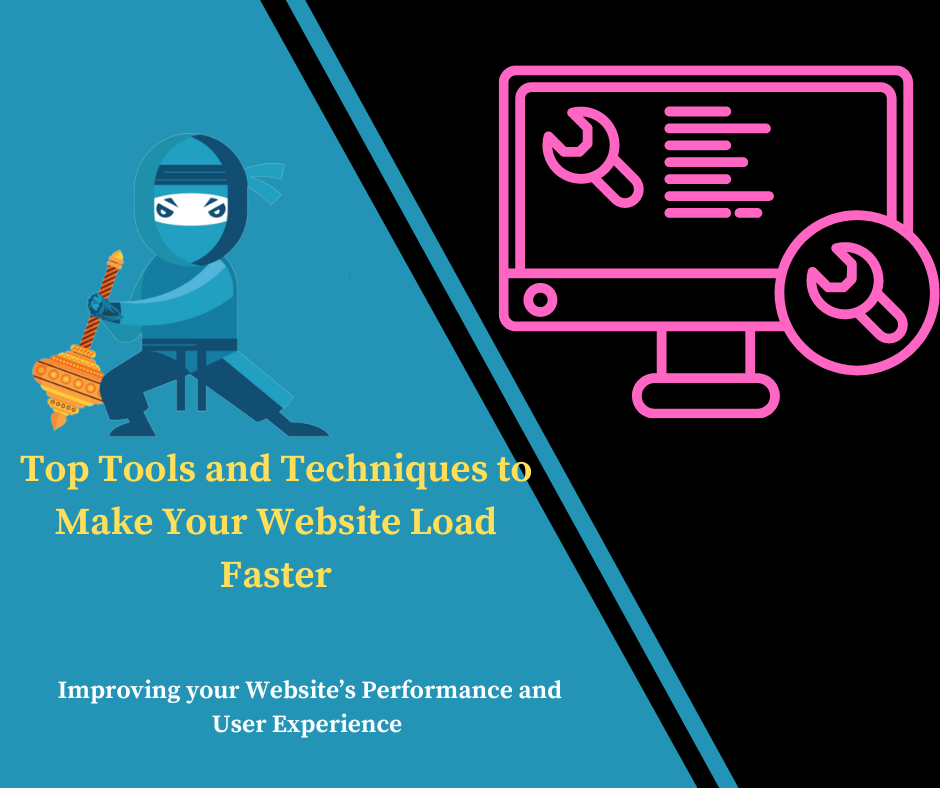Top Tools and Techniques to Make Your Website Load Faster
In today’s digital landscape, website speed plays a critical role in user experience and search engine rankings. A slow-loading website can drive visitors away, increase bounce rates, and negatively impact conversions. To stay competitive, it’s essential to ensure your website loads quickly. Fortunately, there are various tools and techniques available that can help improve your site’s speed and performance. In this article, we’ll explore the top tools and techniques to make your website load faster, enabling you to deliver a seamless browsing experience while boosting your site’s visibility and conversions.
Understanding the Importance of Website Speed
Before diving into the tools and techniques, let’s briefly cover why website speed is so important. Google uses website speed as a ranking factor, meaning faster sites have a better chance of appearing higher in search results. Additionally, a fast-loading website improves user engagement, reduces bounce rates, and increases the likelihood of conversions. Therefore, investing in speeding up your website is an investment in the success of your online presence.
Tools to Improve Website Speed
1. Google PageSpeed Insights
One of the first steps to improving your website’s speed is knowing where it currently stands. Google PageSpeed Insights is a free tool that analyzes the content of a web page and provides recommendations on how to make it faster. It generates a performance score, highlights issues like image sizes or JavaScript inefficiencies, and offers insights on how to fix them.
Key Features:
Provides a detailed analysis of your website’s speed.
Offers specific suggestions for both mobile and desktop performance.
Free and easy to use.
2. GTmetrix
GTmetrix is another popular tool used to measure and analyze your website’s loading performance. It provides an in-depth report on different aspects affecting speed, such as time to first byte (TTFB), total page size, and HTTP requests.
Key Features:
Detailed speed reports including waterfall charts.
Page performance grading to identify critical issues.
Provides actionable recommendations to speed up your site.
3. Pingdom
Pingdom is a widely used tool that checks a website’s loading time and performance. It’s user-friendly and allows you to test your site from different global locations, giving a well-rounded view of how your website performs for visitors from various regions.
Key Features:
Global performance testing.
Tracks historical performance to monitor changes over time.
Allows integration with monitoring alerts for real-time performance updates.
4. WP Rocket (for WordPress websites)
If you run a WordPress site, WP Rocket is an all-in-one performance optimization tool. It combines caching, lazy loading, minification, and more to significantly reduce load times.
Key Features:
Simple installation with no need for coding knowledge.
Enables GZIP compression, lazy loading, and HTML/CSS/JS minification.
Offers a built-in CDN integration for faster content delivery.
5. Cloudflare (Content Delivery Network)
Cloudflare is a content delivery network (CDN) that caches content on servers around the world to ensure your website loads faster, no matter where your visitors are located. By reducing the distance between your server and the user, Cloudflare significantly improves load times.
Key Features:
Global CDN network that reduces latency.
Offers DDoS protection and security features.
Provides caching and content optimization tools.
Techniques to Enhance Website Speed
1. Enable Compression
Enabling compression is one of the most effective techniques to speed up your website. GZIP is a widely used compression method that reduces the size of your CSS, HTML, and JavaScript files. By reducing file sizes, the time it takes for your website to load is shortened.
How to Enable Compression:
Use a tool like GZIP to compress files on your server.
Enable GZIP compression through your hosting provider or CDN.
2. Optimize Images
Images often make up the bulk of a web page’s size, slowing down load times. Always compress images before uploading to ensure images don’t hinder your site’s performance. Tools like TinyPNG or JPEG-Optimizer can reduce file sizes without sacrificing quality.
Best Practices for Image Optimization:
Use the correct image format: JPEG for photographs, and PNG for graphics.
Compress images using tools or WordPress plugins like Smush or ShortPixel.
Implement lazy loading to defer the loading of images until they are in the viewport.
3. Minify CSS, JavaScript, and HTML
Minifying involves removing unnecessary characters (such as spaces and comments) from code files, thus reducing their size. This allows your website to load faster as there’s less data to transfer from the server.
How to Minify Files:
Use tools like CSSNano, UglifyJS, or HTMLMinifier.
If you’re using WordPress, plugins like Autoptimize can automatically minify these files.
Also read: Top E-Commerce Marketing Trends to Watch More Sales in 2024?
4. Leverage Browser Caching
Caching stores static files of your website (such as HTML, CSS, and images) on the user’s device so they don’t have to be reloaded every time the user visits your page. This reduces the load on your server and speeds up repeat visits.
How to Implement Caching:
Enable browser caching through your hosting provider.
Use caching plugins like W3 Total Cache (WordPress) or LiteSpeed Cache.
5. Reduce Redirects
Each time a page redirects to another page, users face additional waiting time. Reducing the number of redirects minimizes HTTP requests, speeding up the loading process.
Best Practices to Reduce Redirects:
Audit your website for unnecessary redirects using tools like Screaming Frog.
Avoid using multiple 301 or 302 redirects in a chain.
6. Choose a Fast and Reliable Hosting Provider
The hosting provider you choose plays a major role in determining your website’s speed. Opting for a shared hosting plan may slow down your site during peak traffic times, whereas dedicated or cloud hosting can provide more resources and faster performance.
Also read: Ultimate Guide: Boost Website Speed for Higher Conversion
Hosting Recommendations:
Consider upgrading to a Virtual Private Server (VPS) or dedicated server.
Choose a host with SSD storage and optimized server configurations for speed.
7. Use a Lightweight Theme (for WordPress)
If you use WordPress, choosing a lightweight theme can drastically reduce load times. Heavy, feature-rich themes may look appealing but often include unnecessary code and features that slow your site down.
Top Lightweight Themes:
Astra
GeneratePress
OceanWP
Frequently Asked Questions
What are the best tools to measure website speed?
Some of the top tools and techniques to measure website speed include Google PageSpeed Insights, GTmetrix, Pingdom, and WebPageTest. Each offers a comprehensive analysis of your site’s performance and provides actionable insights to improve speed.
How do content delivery networks (CDNs) help in improving website speed?
CDNs store cached versions of your site on servers distributed across various geographic locations. When a user accesses your website, the CDN delivers the content from the server closest to them, reducing latency and speeding up load times.
What is image optimization, and why is it important?
Image optimization involves compressing and resizing images to reduce their file size without sacrificing quality. Optimized images load faster, improving your website’s performance and user experience.
How does caching improve website performance?
Caching stores static versions of your website’s resources, such as HTML and images, on the user’s device. This allows returning visitors to load your website faster without having to download the entire page again.
Is using a lightweight theme important for website speed?
Yes, especially for WordPress sites. Lightweight themes are optimized for performance and include minimal code, allowing your site to load faster compared to heavier themes that may include unnecessary features.
Conclusion
Improving your website’s speed requires using the right tools and techniques. By implementing strategies like enabling compression, optimizing images, reducing redirects, and leveraging tools such as CDNs and caching plugins, you can significantly reduce load times and improve overall user experience. Use these top tools and techniques to make your website load faster and enhance its performance for both visitors and search engines alike.








